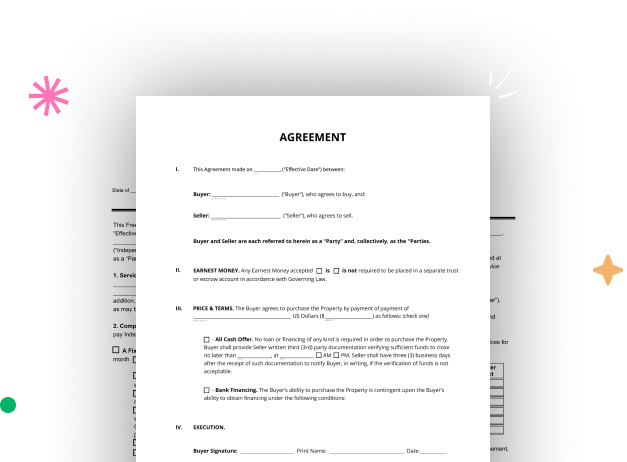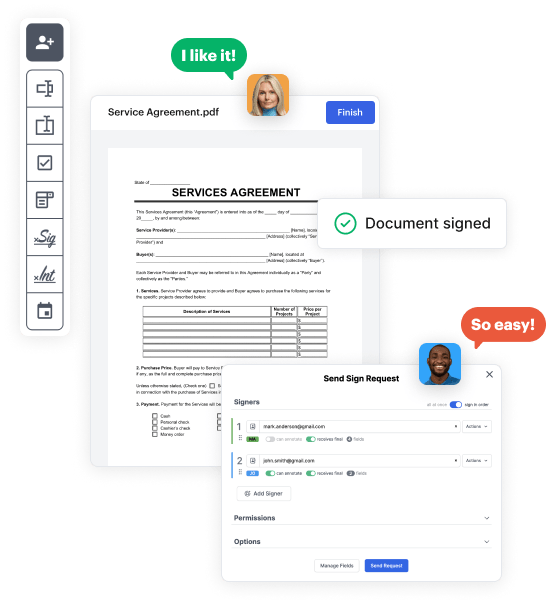

Start by accessing your DocHub account. Explore the advanced DocHub functionality free for 30 days.
Once logged in, go to the DocHub dashboard. This is where you'll build your forms and manage your document workflow.
Click on New Document and select Create Blank Document to be redirected to the form builder.
Use the DocHub tools to add and arrange form fields like text areas, signature boxes, images, and others to your document.
Add needed text, such as questions or instructions, using the text field to guide the users in your form.
Adjust the properties of each field, such as making them required or arranging them according to the data you expect to collect. Designate recipients if applicable.
After you’ve managed to design the Tennessee Rental Agreement, make a final review of your document. Then, save the form within DocHub, send it to your selected location, or share it via a link or email.